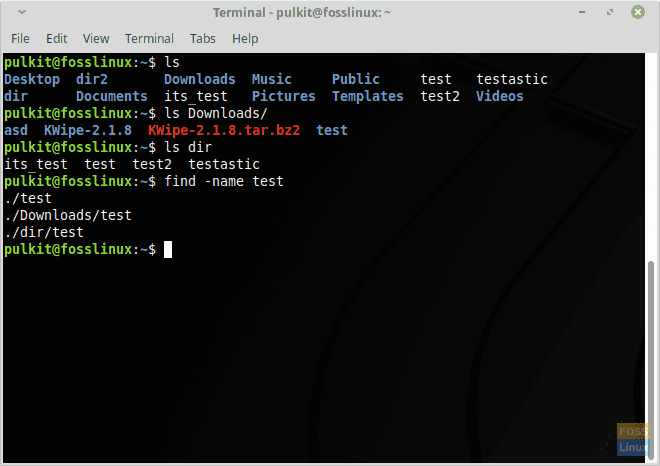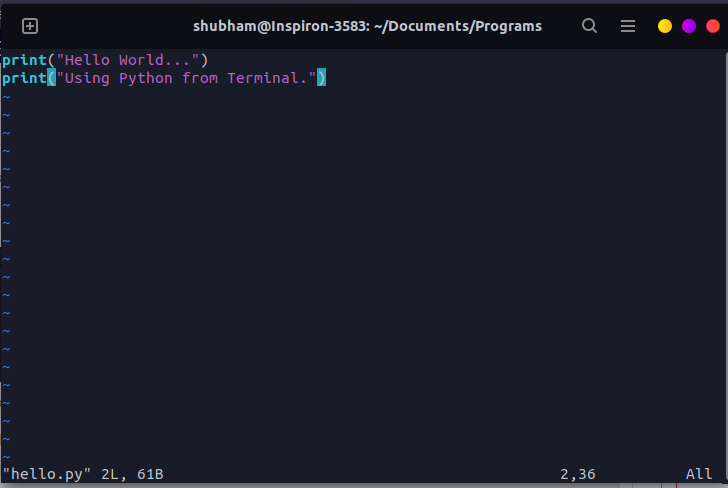The Ultimate Guide to Python Scripting for Automation and System Management
Python has cemented its position as a dominant force in the programming world, extending its influence far beyond web development and data science into the core of modern IT operations. For system administrators, DevOps engineers, and anyone working within a Linux environment, Python scripting has become an indispensable skill. It offers a powerful, readable, and scalable alternative to traditional shell scripting, enabling complex automation, configuration management, and infrastructure orchestration with remarkable efficiency. Whether you’re managing a single Linux server or a fleet of cloud instances, Python provides the tools to streamline your workflows and eliminate repetitive manual tasks.
This comprehensive guide will take you on a journey from the fundamental concepts of Python scripting for system tasks to advanced techniques for remote management and cloud automation. We will explore practical, real-world examples, essential libraries, and best practices that will empower you to leverage Python’s full potential. You’ll learn how to interact with the file system, execute external commands, manage remote servers via SSH, and even interface with web APIs, transforming you from a system user into a system automator.
Section 1: The Foundations of Python for System Tasks
Before diving into complex automation, it’s crucial to understand why Python is often preferred over traditional tools like Bash for scripting and to get comfortable with the core modules that facilitate system interaction.
Why Python Over Bash Scripting?
While Bash scripting is powerful for simple, command-line-centric tasks, it can become cumbersome and error-prone as logic grows in complexity. Python offers several distinct advantages:
- Readability and Simplicity: Python’s clean syntax is easier to read and maintain, especially for team members who may not be shell scripting experts.
- Robust Data Structures: Python has built-in lists, dictionaries, and sets, making it trivial to parse and manipulate complex data formats like JSON or CSV. Doing the same in Bash is significantly more difficult.
- Exceptional Error Handling: Python’s
try...exceptblocks provide a structured way to handle errors gracefully, making scripts more resilient. - Vast Standard Library: Python comes with “batteries included,” offering modules for everything from file I/O and networking to data compression and process management.
- Cross-Platform Compatibility: A Python script written on a Linux machine can often run with little to no modification on Windows or macOS.
Essential Modules: Interacting with the Operating System
Python’s standard library is your primary toolkit. For Linux administration, three modules are fundamental: os, sys, and subprocess.
os: Provides a portable way of using operating system-dependent functionality. This is your go-to for file and directory manipulation, such as checking for existence (os.path.exists()), creating directories (os.makedirs()), and traversing directory trees (os.walk()).sys: Gives you access to system-specific parameters and functions. The most common use case is accessing command-line arguments viasys.argv, allowing you to pass inputs to your scripts.subprocess: The modern and recommended way to run external commands and connect to their input/output/error pipes. It replaces older modules likeos.systemandos.popen.
Practical Example: Finding Large Files
Let’s write a simple script that uses the os and sys modules to find files larger than a specified size in a given directory. This is a common task for a system administrator trying to clean up disk space on a Linux server.
#!/usr/bin/env python3
# find_large_files.py
import os
import sys
def find_large_files(directory, min_size_mb):
"""
Finds files in a directory larger than a given size in megabytes.
"""
try:
min_size_bytes = min_size_mb * 1024 * 1024
print(f"Searching for files larger than {min_size_mb} MB in '{directory}'...")
large_files = []
for dirpath, _, filenames in os.walk(directory):
for filename in filenames:
file_path = os.path.join(dirpath, filename)
# Use a try-except block to handle potential permission errors
try:
if os.path.getsize(file_path) > min_size_bytes:
file_size = os.path.getsize(file_path) / (1024 * 1024)
large_files.append((file_path, file_size))
except FileNotFoundError:
# File might be a broken symlink
continue
except OSError as e:
print(f"Error accessing {file_path}: {e}", file=sys.stderr)
return large_files
except FileNotFoundError:
print(f"Error: Directory '{directory}' not found.", file=sys.stderr)
sys.exit(1)
if __name__ == "__main__":
if len(sys.argv) != 3:
print("Usage: python3 find_large_files.py <directory> <min_size_in_mb>")
sys.exit(1)
target_directory = sys.argv[1]
try:
minimum_size = int(sys.argv[2])
except ValueError:
print("Error: Minimum size must be an integer.", file=sys.stderr)
sys.exit(1)
found_files = find_large_files(target_directory, minimum_size)
if found_files:
print("\nFound the following large files:")
for path, size in found_files:
print(f" - {path} ({size:.2f} MB)")
else:
print("\nNo files found larger than the specified size.")To run this script from your Linux Terminal, you would save it as find_large_files.py, make it executable with chmod +x find_large_files.py, and run it: ./find_large_files.py /var/log 50.
Section 2: Practical Automation with Python
With the basics covered, we can move on to more practical automation scripts. A core tenet of Python DevOps is automating repetitive tasks to ensure consistency and save time. We’ll explore creating a backup script and then learn how to properly execute and manage shell commands from within Python.

Automating System Backups
Let’s create a script that automates the process of backing up a directory by creating a compressed archive with a timestamp. This is a classic system administration task perfect for Python.
#!/usr/bin/env python3
# simple_backup.py
import os
import shutil
from datetime import datetime
import sys
def create_backup(source_dir, dest_dir):
"""
Creates a compressed zip archive of a source directory and saves it
to a destination directory with a timestamp.
"""
# 1. Validate paths
if not os.path.isdir(source_dir):
print(f"Error: Source directory '{source_dir}' does not exist.", file=sys.stderr)
return False
if not os.path.isdir(dest_dir):
try:
os.makedirs(dest_dir)
print(f"Created destination directory: '{dest_dir}'")
except OSError as e:
print(f"Error: Could not create destination directory '{dest_dir}': {e}", file=sys.stderr)
return False
# 2. Create a timestamped filename
timestamp = datetime.now().strftime("%Y-%m-%d_%H-%M-%S")
source_basename = os.path.basename(os.path.normpath(source_dir))
backup_filename = f"{source_basename}_backup_{timestamp}"
archive_path = os.path.join(dest_dir, backup_filename)
# 3. Create the archive
try:
print(f"Creating backup of '{source_dir}'...")
shutil.make_archive(archive_path, 'zip', source_dir)
print(f"Successfully created backup: {archive_path}.zip")
return True
except Exception as e:
print(f"Error creating archive: {e}", file=sys.stderr)
return False
if __name__ == "__main__":
if len(sys.argv) != 3:
print("Usage: python3 simple_backup.py <source_directory> <destination_directory>")
sys.exit(1)
source_directory = sys.argv[1]
destination_directory = sys.argv[2]
create_backup(source_directory, destination_directory)This script uses the shutil module, which provides high-level file operations. The shutil.make_archive() function is incredibly useful, handling the complexities of creating a zip or tar file in a single line. This script could easily be scheduled with a cron job to perform regular Linux backup operations.
Executing Shell Commands with `subprocess`
Sometimes, you need to run an external command and capture its output. The subprocess module is the standard for this. Let’s write a script to check disk usage by running the df -h command and parsing its output to find filesystems that are nearing capacity.
#!/usr/bin/env python3
# check_disk_usage.py
import subprocess
import sys
def check_disk_usage(threshold):
"""
Runs 'df -h' and checks for filesystems with usage above a given threshold.
"""
print(f"Checking for filesystems with usage over {threshold}%...")
# Run the command. text=True decodes stdout/stderr as text.
# capture_output=True captures stdout and stderr.
# check=True raises an exception if the command returns a non-zero exit code.
try:
result = subprocess.run(
['df', '-h'],
capture_output=True,
text=True,
check=True
)
except FileNotFoundError:
print("Error: 'df' command not found. Is this a Linux/Unix system?", file=sys.stderr)
return
except subprocess.CalledProcessError as e:
print(f"Error executing 'df -h': {e.stderr}", file=sys.stderr)
return
lines = result.stdout.strip().split('\n')
high_usage_alerts = []
# Skip the header line
for line in lines[1:]:
parts = line.split()
filesystem = parts[0]
used_percent_str = parts[4]
mount_point = parts[5]
if used_percent_str.endswith('%'):
try:
used_percent = int(used_percent_str[:-1])
if used_percent > threshold:
high_usage_alerts.append((mount_point, used_percent))
except ValueError:
continue # Skip lines that can't be parsed
return high_usage_alerts
if __name__ == "__main__":
if len(sys.argv) != 2:
print("Usage: python3 check_disk_usage.py <usage_threshold_percent>")
sys.exit(1)
try:
usage_threshold = int(sys.argv[1])
if not (0 < usage_threshold < 100):
raise ValueError()
except ValueError:
print("Error: Threshold must be an integer between 1 and 99.", file=sys.stderr)
sys.exit(1)
alerts = check_disk_usage(usage_threshold)
if alerts:
print("\nALERT: High disk usage detected on the following filesystems:")
for mount, percent in alerts:
print(f" - Mount Point: {mount}, Usage: {percent}%")
else:
print("\nOK: All filesystem usage is within the threshold.")This example demonstrates key features of subprocess.run(): capturing output, checking for errors, and decoding the result as text. This approach is far more robust than using os.system() and allows your Python script to make decisions based on the output of powerful Linux commands.
Section 3: Advanced Python Scripting for Modern DevOps
Modern infrastructure is often distributed and API-driven. Python automation excels in this environment, with powerful third-party libraries for managing remote systems, interacting with web services, and controlling cloud resources.
Remote System Management with Paramiko
Paramiko is a leading Python library for managing remote servers over Linux SSH. It allows you to programmatically execute commands, transfer files, and manage remote systems as if you were at the terminal.
First, install it: pip install paramiko
Here’s a script that connects to a list of servers and checks their uptime.
#!/usr/bin/env python3
# remote_uptime_checker.py
import paramiko
import getpass
def check_server_uptime(hostname, username, password):
"""
Connects to a remote server via SSH and executes the 'uptime' command.
"""
client = paramiko.SSHClient()
# Automatically add the server's host key (less secure, fine for demos)
client.set_missing_host_key_policy(paramiko.AutoAddPolicy())
try:
print(f"\nConnecting to {hostname}...")
client.connect(hostname, username=username, password=password, timeout=10)
stdin, stdout, stderr = client.exec_command('uptime -p')
uptime_output = stdout.read().decode().strip()
error_output = stderr.read().decode().strip()
if error_output:
print(f" Error on {hostname}: {error_output}")
else:
print(f" Uptime for {hostname}: {uptime_output}")
except Exception as e:
print(f" Failed to connect or execute on {hostname}: {e}")
finally:
client.close()
if __name__ == "__main__":
servers = ['server1.example.com', 'server2.example.com', '192.168.1.100'] # Replace with your servers
user = input("Enter SSH username: ")
# Use getpass to securely prompt for the password without echoing it
pwd = getpass.getpass("Enter SSH password: ")
for server in servers:
check_server_uptime(server, user, pwd)Note: Using passwords directly is not recommended for production. Best practice involves using SSH keys. Paramiko fully supports key-based authentication.
Interacting with Web APIs using `requests`
Many modern services, from monitoring dashboards to cloud providers, expose a REST API. The requests library is the de facto standard for making HTTP requests in Python.

First, install it: pip install requests
This example script checks the health of a web application by querying its health-check endpoint.
#!/usr/bin/env python3
# service_health_check.py
import requests
import time
def check_service_health(url, timeout=5):
"""
Performs a GET request to a URL and checks for a 200 OK status.
"""
try:
response = requests.get(url, timeout=timeout)
# A status code of 200-299 is generally considered successful
if response.ok:
print(f"[{time.ctime()}] SUCCESS: Service at {url} is UP. Status: {response.status_code}")
return True
else:
print(f"[{time.ctime()}] FAILURE: Service at {url} is DOWN. Status: {response.status_code}")
return False
except requests.exceptions.RequestException as e:
print(f"[{time.ctime()}] FAILURE: Could not connect to {url}. Error: {e}")
return False
if __name__ == "__main__":
# A list of services to monitor
services_to_check = [
"https://api.github.com/status",
"http://example.com",
"http://a-service-that-is-down.local"
]
for service in services_to_check:
check_service_health(service)
print("-" * 30)This type of script is invaluable for system monitoring and can be integrated into alerting systems to notify administrators of downtime.
Section 4: Best Practices for Robust and Maintainable Scripts
Writing a script that works is one thing; writing a script that is reliable, secure, and easy for others (or your future self) to understand is another. Adhering to best practices is crucial for professional Python scripting.
Code Quality and Readability
Always follow the PEP 8 style guide for Python code. Use meaningful variable names, write clear comments for complex logic, and break down large scripts into smaller, reusable functions. A clean, well-documented script is easier to debug and maintain.
Error Handling and Logging
Never assume a command or operation will succeed. Wrap potentially problematic code (like file I/O or network requests) in try...except blocks to handle exceptions gracefully. Instead of using print() for status messages and errors, use the built-in logging module. It allows you to control the verbosity of your output, direct messages to files or system logs, and add valuable context like timestamps.

Managing Dependencies with Virtual Environments
Avoid installing Python packages globally. Use Python's built-in venv module to create an isolated environment for each project. This prevents dependency conflicts and makes your project's requirements explicit.
To create one: python3 -m venv my-project-env
To activate it on Linux: source my-project-env/bin/activate
Making Scripts Executable
For scripts intended for use in a Linux Terminal, always include a "shebang" line at the very top: #!/usr/bin/env python3. This tells the shell which interpreter to use. Then, make the script executable using the command: chmod +x your_script.py. Now you can run it directly with ./your_script.py instead of python3 your_script.py.
Conclusion: Your Journey with Python Automation
We've journeyed from basic file operations to advanced remote system management, demonstrating how Python scripting is a transformative skill for anyone in Linux administration, system monitoring, or DevOps. Python's clear syntax, powerful standard library, and a rich ecosystem of third-party packages provide a robust platform for automating nearly any task imaginable.
By replacing manual, error-prone processes with reliable, version-controlled scripts, you not only increase efficiency but also build a more stable and predictable infrastructure. The examples provided are just the starting point. The next step is to identify the repetitive tasks in your own workflow and start automating them. Whether it's managing users, configuring an Nginx web server, or orchestrating Docker containers, Python is the tool that will help you get it done.




